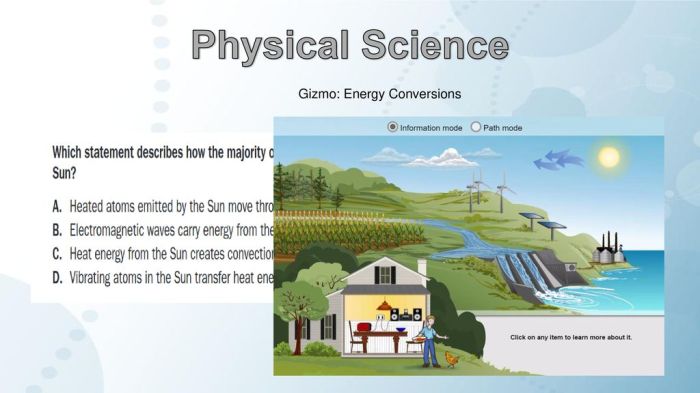Student exploration: balancing chemical equations answer key embarks on a fascinating journey into the realm of chemistry, empowering learners to unravel the intricacies of chemical equations. This comprehensive guide unveils innovative methods, addresses common pitfalls, and provides a treasure trove of assessment strategies, making it an indispensable resource for educators and students alike.
Delving into the depths of student exploration, we uncover its profound impact on fostering comprehension and critical thinking skills. By engaging in hands-on activities, simulations, and problem-solving exercises, students transform from passive observers into active participants, constructing a deep-seated understanding of chemical principles.
Student Exploration: Balancing Chemical Equations: Student Exploration: Balancing Chemical Equations Answer Key
Student exploration is a crucial component in fostering understanding and critical thinking in balancing chemical equations. It provides opportunities for students to actively engage with the concepts, develop problem-solving skills, and make meaningful connections to the underlying principles.
Methods and Techniques for Student Exploration
- Hands-on Activities:Experiments and simulations allow students to manipulate variables, observe reactions, and test their hypotheses firsthand.
- Problem-Solving Exercises:Open-ended problems and challenges encourage students to apply their knowledge and develop strategies for solving complex equations.
- Interactive Simulations:Digital simulations provide a virtual environment where students can explore the process of balancing equations and receive immediate feedback.
Common Challenges and Misconceptions
Students often encounter challenges in balancing equations, including:
- Misinterpreting the concept of coefficients
- Assuming that the number of atoms must be equal on both sides
- Overlooking the conservation of mass
Assessment and Evaluation
Assessment of student learning in balancing equations can include:
- Rubrics:Criteria-based rubrics evaluate student understanding, problem-solving skills, and accuracy.
- Performance Tasks:Tasks that require students to balance equations in different contexts assess their ability to apply their knowledge.
Integration into Curriculum and Objectives, Student exploration: balancing chemical equations answer key
Student exploration can be integrated into the curriculum by:
- Connecting it to stoichiometry and reaction types
- Using it to introduce concepts of chemical equilibrium
- Developing activities that align with specific learning objectives
Role of Technology and Digital Resources
Technology plays a significant role in supporting student exploration:
- Online Simulations:Interactive simulations provide a visual and engaging way to practice balancing equations.
- Virtual Labs:Virtual labs offer safe and accessible environments for students to conduct experiments and explore chemical reactions.
- Gamification:Games and challenges can make balancing equations more engaging and motivating.
FAQ Corner
What is the significance of student exploration in balancing chemical equations?
Student exploration fosters a profound understanding of chemical principles, promotes critical thinking, and enhances problem-solving abilities.
How can technology support student exploration of balancing chemical equations?
Technology provides interactive simulations, virtual labs, and online resources that enhance visualization, experimentation, and engagement.

